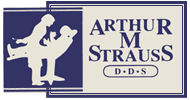Articles - Your Health Magazine, January 2009
Vision & Impaired Oral Function
Part One of a Two Part Series, Part 2
There is robust literature and practical experience related to the benefits of healthful breathing. I have discussed the hypothesis that our body functions in accordance with the cardio-pulmonary-resuscitation priority of Airway, Breathing, Circulation or ABC. The body reacts to inadequate air flow, rather than waiting until the air is completely cut off as in choking or a classic obstructive sleep apnea event.
In my three part article Women, Breathing, Sleep Apnea, Menopause, Posture I discussed the correlation between impaired oral function in the form of obstructive sleep apnea in women and how the incidence and severity of sleep apnea and snoring appear to correlate with the upper back and neck curvature known as the “dowager’s hump.” In both sexes there is an age related correlation between increased snoring and sleep apnea severity and incidence and a bent over posture.
This relationship is referred to as compensatory head posture changes in patients with obstructive sleep apnea by Tong Maorong and others in the Journal of Huazhong University of Science and Technology. In this study “the upper airway narrowing and changes in head posture and their relationship with apnea severity in patients with obstructive sleep apnea (OSA) were investigated.
“Significant forward inclination of the cervical column was found in the patients with severe sleep apnea.” Changes in the head posture variables were significantly correlated with apnea severity and airway dimensions at various levels. This is “ even in upright positions and awake states; and as the apnea severity progresses, patients may assume certain compensatory head postures in an attempt to maintain an adequate airway patency.”
I have also discussed “ideal posture.” The earlobes are directly over the center of the shoulders, the hip bones, the knees and the ankles. Stand barefoot with your heels, buttocks, shoulders and head back against the wall. To force your posture straight the head is tilted upward. Tilt your head down until your eyes are parallel to the horizon. You are likely to feel choking, as if your airflow is reduced or cut off. Note your ease or difficulty when attempting to speak, swallow or breathe. Move back to your comfortable compensated posture referred to as normal, and attempt to speak, swallow and breathe. Compare the difference.
Some literature on vision and motion suggests the head posture allowing the eyes to focus straight ahead toward the horizon. Essentially, this allows us to see where we are going without tripping over something.
This illustrates what Mark W Morningstar, Burl R Pettibon and others discuss in Reflex Control of the Spine and Posture: A Review of the Literature From a Chiropractic Perspective, Chiropractic & Osteopathy 2005. They note that “the visual field and pathway are important regulators of postural control. Visual input for postural control helps to fixate the position of the head and upper trunk in space, primarily so that the center of mass of the trunk maintains balance over the well-defined limits of foot support.”
Given the body’s survival priorities, I believe airway trumps balance and vision. That is not to say that balance and vision are not contributors, together they determine our posture. When we place this in perspective, we can see the need for a greater awareness of these relationships.
